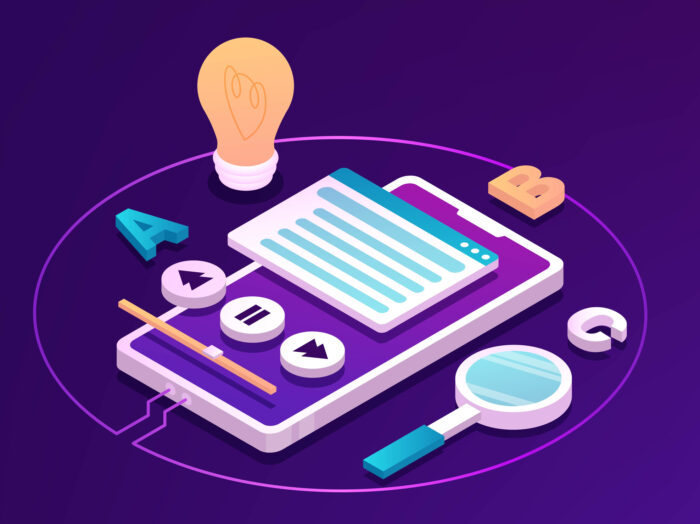An employee development plan is a structured approach to helping employees grow in their careers and improve their skills
In this article, we’ll help you create one via simple, actionable steps.
Why Create an Employee Development Plan?
Employee development plans are a powerful tool to help an organisation reach a competitive advantage. These plans fuel personal and professional growth, leading to increased job satisfaction, confidence, and, ultimately, performance.
From the organisation’s perspective, investing in employee development fosters a culture of learning and growth. By nurturing key talent, organisations cultivate a strong leadership pipeline, ensuring a smooth transition and stability as leaders move on.
Finally, a team brimming with continuously developing individuals fosters exceptional collaboration, problem-solving, and overall performance. The infusion of fresh ideas and innovative solutions becomes the norm, propelling the organisation towards success.
Benefits of an Employee Development Plan
Employer development programmes aren’t just about helping employees advance their careers; they are strategic investments that benefit the business at large. Here are the key benefits:
1. Happier, More Product Teams
Employees crave opportunities to learn and grow, and a development plan provides a clear path to achieving their career goals. This fosters motivation, job satisfaction, and loyalty.
2. Maintain a Competitive Edge
Strategic employee development plans ensure your team stays ahead of the curve as the landscape changes.
3. Nurturing Future Leaders
Development plans identify and nurture potential leaders within the organisation. Investing in their growth ensures a strong pipeline of future leaders for the company.
4. More Efficient Operations
Skilled and knowledgeable employees are the foundation of a productive workforce. Development enhances their capabilities, leading to improved efficiency and better outcomes.
5. Attracting and Retaining Top Talent
Companies that invest in employee development are more appealing to top talent. Development plans also help retain top performers who recognise opportunities for growth and career advancement.
6 Steps to Creating an Employee Development Plan
Step 1: Assess Employee Skills and Needs
The first step in creating an employee development plan is to assess the current skills, competencies, and career aspirations of an employee. This assessment forms the basis for identifying the specific areas where development is needed.
Begin by taking an inventory of their current skills. This can include both technical skills relevant to their job and soft skills like communication and teamwork. Use methods like self-assessment, manager evaluations, and performance reviews to get a comprehensive view.
Part of this process involves understanding the employee’s career goals and aspirations. Find out about their interests, where they see themselves in the future, and the kind of roles they aspire to within the organisation.
With this knowledge, you can identify any gaps between where they are now and where they need to be to achieve their career goals.
Finally, gathering feedback from peers, managers, and mentors can provide additional insights into the areas that need development. This feedback can be invaluable in creating a well-rounded development plan.
Step 2: Set Clear Goals
After assessing the employee’s skills and career aspirations, the next step is to set clear, specific goals for their development. These goals should be aligned with both the employee’s career objectives and the organisation’s needs.
- Define Specific Skills to Develop: This could range from technical skills specific to their job role to soft skills like leadership or problem-solving.
- Create Measurable Objectives: Ensure that each goal is measurable. For example, instead of a vague goal like “improve project management skills,” specify what improvement looks like, such as “able to manage a project independently from start to finish.”
- Align with Career Aspirations: Make sure the goals align with the employee’s career aspirations. If they are aiming for a leadership role, include goals related to leadership skills like team management or strategic planning.
- Set Realistic Timelines: Assign realistic timelines for achieving these goals. Consider the employee’s current workload and other commitments to ensure the timelines are achievable.
- Ensure Organisational Alignment: Additionally, align these goals with the organisation’s objectives. If the company is moving towards digital transformation, include relevant digital skills in the development plan.
Step 3: Align Goals with Business Strategy
Once clear goals are set for the employee’s development, it’s essential to ensure these goals are in harmony with the broader business strategy. This alignment ensures that the employee’s growth contributes directly to the company’s success.
- Clarify Business Objectives: What are the key areas the company is focusing on? This could be anything from expanding into new markets, and improving customer service to innovating product offerings.
- Match Skills with Business Needs: Look at how the skills being developed in the employee can support these business objectives. For example, if the company aims to enhance its digital presence, skills in digital marketing or social media management would be relevant.
- Encourage Versatility: Encourage the development of versatile skills that are valuable across various aspects of the business. This approach not only benefits the employee in terms of broadening their skillset but also provides flexibility to the organisation in resource allocation.
- Promote Strategic Thinking: Include goals that encourage the employee to think strategically and understand the bigger business picture. This is especially important for those in, or aspiring to, leadership roles.
- Regular Review and Adjustment: Ensure that the goals and business strategies remain aligned over time. Regular reviews and adjustments to the development plan may be necessary as business needs evolve.
Step 4: Develop Training and Development Activities
With clear goals aligned with the business strategy, the next step is to develop specific training activities that will help the employee achieve them. This involves choosing the right mix of activities that cater to the identified skills gaps and learning preferences.
Depending on the skills and goals identified, the right training methods could include in-house training, online courses, workshops, or attending conferences and seminars. Consider opportunities for on-the-job training, too, such as working on specific projects, shadowing more experienced colleagues, or cross-departmental assignments.
Make use of technology and online resources where possible There are numerous online platforms offering courses and training materials that can be accessed remotely and flexibly.
You should also tailor the learning plan to the employee’s personal learning style and preferences. This might mean a blend of visual learning materials, interactive sessions, and reading materials.
Finally, include milestones and checkpoints in the training plan. This helps in tracking progress and ensuring that the training is effective and aligned with the set goals.
Step 5: Implement the Development Plan
The next critical step is to put the plan into action. Implementation involves initiating the training activities, monitoring progress, and ensuring that the plan stays on track.
Start by formally launching the development plan. This could involve an initial meeting with the employee to go over the plan, set expectations, and discuss how progress will be tracked and evaluated.
Ensure that the planned activities are scheduled in a way that is manageable for the employee, considering their current workload and other commitments. Ensure the employee has access to all the resources they need, such as courses, materials, mentors, and any necessary technology.
Don’t forget the employee will need more than simply the right tools. A great workplace will also help motivate the employee to actively participate in their development. Regular check-ins help with this, plus words of encouragement, and simply recognising progress.
Step 6: Monitor Progress and Provide Feedback
The final step in creating an employee development plan is to monitor the employee’s progress and provide regular feedback.
- Set Up Regular Check-Ins: Schedule periodic meetings with the employee to review their progress. These check-ins can be weekly, monthly, or quarterly, depending on the goals and the nature of the training activities.
- Measure Progress Against Goals: During these check-ins, assess the employee’s progress against the specific goals set in the development plan. Look at both the completion of training activities and the development of skills.
- Provide Constructive Feedback: Offer constructive feedback on the employee’s progress. Highlight areas where they are doing well and discuss any areas that need improvement. Feedback should be specific, actionable, and supportive.
- Adjust the Plan as Needed: Be prepared to make adjustments to the plan based on the progress being made. If certain skills are being developed faster or slower than expected, the plan may need to be modified accordingly.
- Encourage Self-Reflection: Encourage the employee to reflect on their own learning and development. Self-reflection can provide valuable insights into how they learn best and what areas they find most challenging.
- Document Achievements: Keep a record of the milestones achieved and skills developed. This documentation not only serves as a record of progress but can also be used in future performance evaluations.
Examples of Effective Development Plans
To illustrate how an employee development plan can be structured and implemented, let’s consider some practical examples. These examples will show how different elements of a development plan can be tailored to meet specific employee needs and organisational goals.
Example 1: Developing Leadership Skills
- Employee: John, a mid-level manager.
- Goal: To prepare John for a senior management role.
- Skills to Develop: Advanced leadership, strategic decision-making, and financial acumen.
- Training Activities: Leadership workshops, mentorship with a senior leader, and enrolment in a strategic management course.
- Timeline: 1 year to complete the training and achieve the set goals.
- Progress Monitoring: Monthly check-ins with HR and quarterly reviews with the mentor.
Example 2: Enhancing Technical Skills
- Employee: Sarah, a software developer.
- Goal: To upgrade Sarah’s skills in new programming languages.
- Skills to Develop: Proficiency in Python and JavaScript.
- Training Activities: Online courses in Python and JavaScript, participation in coding boot camps.
- Timeline: 6 months to achieve proficiency.
- Progress Monitoring: Bi-weekly meetings with the team lead to discuss learning progress and practical application in projects.
Example 3: Improving Customer Service
- Employee: Alex, a customer service representative.
- Goal: To enhance customer engagement and satisfaction skills.
- Skills to Develop: Advanced communication, conflict resolution, and customer relationship management.
- Training Activities: Customer service training seminars, role-playing sessions, and communication workshops.
- Timeline: 3 months to demonstrate improved customer service metrics.
- Progress Monitoring: Regular feedback sessions with the supervisor and monitoring customer satisfaction scores.
These examples demonstrate how development plans can vary based on the employee’s role, the skills to be developed, and the specific goals of the organisation. They provide a blueprint for creating tailored development plans that are both achievable and aligned with business objectives.
5 Essential Elements for Effective Employee Development Plans
A comprehensive employee development plan encompasses five key components that drive its effectiveness:
- Clear Skill Development Goals: Define specific skills to be enhanced, whether technical, soft, or a combination, aligning with individual roles and aspirations.
- Targeted Training and Learning: Outline tailored training and learning activities, incorporating formal courses, on-the-job experiences, and mentorship opportunities.
- Quantifiable Success Metrics: Establish clear indicators to measure progress, directly linked to the skills being developed, such as sales targets, customer satisfaction improvements, or project completion times.
- Realistic Achievement Timeline: Set a practical timeframe for goal attainment, incorporating milestones to track progress, such as monthly or quarterly reviews.
- Regular Review and Feedback Mechanisms: Implement ongoing review sessions with mentors or supervisors to provide feedback, address challenges, and adapt the plan as needed.
By incorporating these essential elements, employee development plans become dynamic tools for professional growth, skill enhancement, and mutual benefits for both employees and organisations.
Omniplex Guide is a digital adoption platform that can help you ensure employee proficiency on any platform. To find out more get in touch or book a free product tour.




